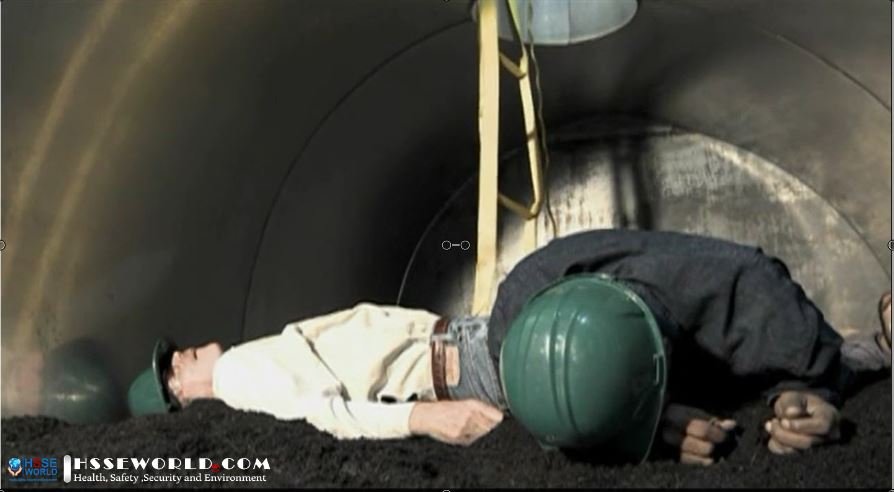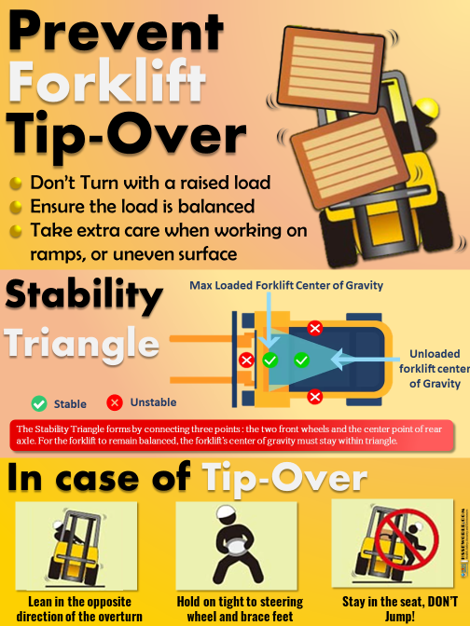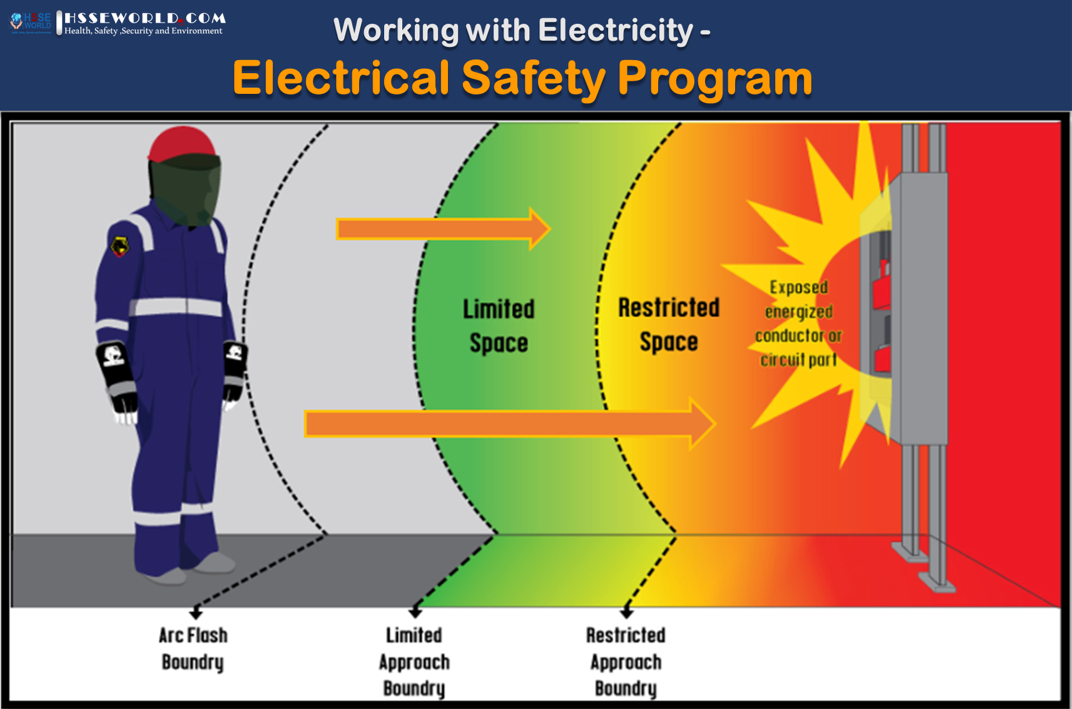Confined spaces can be dangerous, especially if a confined space entry is conducted poorly by untrained personnel. This training program and safety video explain the potential hazards of a confined space entry and how these hazards can be controlled with a proper confined space entry program. Reenactments of confined space accidents and confined space rescues are shown to teach the viewers the importance of following OSHA regulation; specifically, OSHA regulation 1910.146 requires practices and procedures, which protect workers from potential hazards during a confined space entry. This program will prepare viewers with the following:
- The definition of non-permit and permit-required confined spaces
- How the entry permit system and confined space training works to ensure worker safety while entering, working in, or exiting a confined space
- The four types of atmospheric hazards and how atmospheric testing and monitoring is conducted to ensure a confined space is safe for entry and occupancy
- Other potential hazards that exist in a confined space and how these hazards may be controlled
Definition of a ‘confined space’
- The occupational safety and health administration, OSHA, defines a “confined space” as “any area that isn’t designated for continuous occupancy, that is large enough for an employee to enter and perform work and there are limited or restricted means for entry and exit.”
- In addition to being hard to get into and out of, confined spaces can pose hazards to workers such as fall hazards, physical hazards, or atmospheric hazards.
- Because of the dangers presented by confined spaces, OSHA created its confined space safety regulation, 1910.146. This regulation contains requirements for practices and procedures which protect general industry workers from confined space hazards.
- This regulation requires that the workplace be evaluated for the existence of confined spaces and that those confined spaces be categorized into two types: permit-required confined spaces and non-permit confined spaces.
Non-permit spaces vs. permit-required spaces
- As the name implies, a non-permit required space has been deemed to have no significant hazards and OSHA does not require any confined space entry procedure to be followed or a written permit be issued in order to enter.
- On the other hand, a permit-required confined space has been deemed to contain or have the potential to contain serious hazards.
- When permit-required spaces exist, OSHA’s regulation requires a written confined space entry plan to be developed which includes a permit entry system designed to ensure that all hazards are controlled prior to and during an entry of the space.
- The written permit-space program is a detailed plan for conducting safe entry operations for the specific permit-required confined spaces on-site and is available for employee review.
The entry permit system
- A critical part of your company’s confined space entry program is the entry permit system. In this system, written entry permits are used to document the control of hazards and ensure worker safety while entering, working in, and exiting permit-required confined spaces.
- Prior to any authorization being given for entry, the entry permit system requires that the means, procedures, and practices necessary for safe entry operations be documented on an entry permit.
- Some of the important information contained on the entry permit includes the authorized entrants listed by name or by other means such that the attendant can quickly and accurately determine which authorized entrants are inside the space; the name and signature of the individual serving as the entry supervisor; and, a listing of the potential hazards of the permit space to be entered.
- Also listed on the permit must be the means used to isolate the space as well as the means used to eliminate or control the hazards of the space prior to entry.
- Isolating the space means the process by which a permit space is removed from service and completely protected against the release of materials or energy into space (1910.146 (b)).
- The permit must also list the acceptable entry conditions and the results of the initial atmospheric testing as well as the names of the testers and the date and time of the testing.
- The entry permit must include the name of the rescue and emergency services that can be summoned and the means by which they can be summoned.
- A listing of all equipment needed for a proper entry such as ppe, testing equipment, communications equipment, alarm systems, and rescue equipment are also required to be listed on the permit.
Atmospheric hazards
- It takes a great deal of planning and forethought to properly conduct a safe confined space entry. This is because the hazards and risks can be extreme, the conditions may change suddenly, and rescue in the event of an incident can be difficult and dangerous.
- Osha defines a hazardous atmosphere as an atmosphere that may expose employees to the risk of death, incapacitation, impairment of the ability to self-rescue, injury, or acute illness.
(learnmore about: permit-required-confined-spaces/)
Flammable/combustible/explosive atmospheres
- One type of hazardous atmosphere is a flammable, combustible, or explosive atmosphere. This can occur when there is a presence of flammable gas, vapor, or mist in excess of 10 percent of its lower flammable limit.
- This can also occur due to the presence of airborne combustible dust that meets or exceeds its lower flammable limit.
Oxygen-Rich & Oxygen-Deficient Atmospheres
- Another atmospheric condition that creates a severe risk of fire or explosion is an oxygen-rich atmosphere.
- An oxygen-rich atmosphere exists when the air inside the space contains an oxygen level above 23.5 percent.
- When this is the case the air is flammable and sparks from tools or equipment, or any other source of ignition, could cause a flash fire or an explosion.
Toxic Atmosphere
- A toxic atmosphere can occur when a confined space contains toxic substances above their permissible exposure limits.
- Sometimes the conditions inside a space are so hazardous that they pose an immediate or delayed threat to life would cause irreversible adverse health effects or would interfere with an individual’s ability to escape unaided from a permit space.
- Osha refers to this type of condition as an IDLH condition. IDLH stands for “immediately dangerous to life and health.”
- Toxic gases and vapors in confined spaces come from a wide variety of sources. Carbon monoxide, hydrogen sulfide, and methane are three of the most common naturally-produced gases that can be fatal for confined space occupants.
Atmospheric testing & monitoring
- To prevent workers from being exposed to these and other toxic gases or hazardous atmospheres, OSHA requires the internal atmosphere of a confined space to be tested with a calibrated direct-reading instrument.
- This atmospheric testing must be done for oxygen content, flammable gases and vapors, and potential toxic air contaminants. The testing must be done in this specific order.
- After the initial atmospheric testing, monitoring of the atmosphere inside the space should take place for as long as the entrants are inside.
- The entry permit will list the atmospheric conditions acceptable for entry, but at a minimum, you should test to ensure that oxygen levels are between 19.5 and 23.5 percent, combustible gases do not exceed 10 percent of their lower flammable limit, and that any toxic gases do not exceed their permissible exposure limits.
- When monitoring space, it is important to take samples at the top, middle and bottom to locate varying concentrations of gas and vapors. Highly concentrated gases can accumulate at the top or bottom of space if they are more or less dense than air.
- If atmospheric testing indicates the existence of a hazardous atmosphere, forced-air ventilation must be used to eliminate the hazardous atmosphere before any workers are permitted to enter the space.
- The atmosphere must continue to be monitored during the entry to make sure the forced-air ventilation is preventing the accumulation of a hazardous atmosphere.
- Forced-air ventilation must continue until all employees have exited the space.
Other confined space hazards
- Rotating shafts, cutting blades, and mixing vessels are just some of the mechanical hazards that can pose the risk of injury to entrants of confined spaces.
- Engulfment hazards are also found in some confined spaces. Workers who stand on or fall into certain materials can become entrapped and engulfed.
- In addition, workers inside a confined space can be engulfed when liquids or materials are released into space. These types of engulfment incidents frequently result in death.
Controlling hazards
- All the hazards of a particular space will be listed on the entry permit as well as the methods that are used to control them.
- Some examples of methods to control confined space hazards include performing line breaking and blanking procedures to isolate a space and prevent the inflow of materials and performing a proper lockout/Tagout procedure to control the hazard of moving parts or rotating blades.
- This is why following the entry permit system is so important; it provides a method for everyone involved in the entry process to understand the hazards involved and ensure those hazards have been controlled prior to entry.
Responsibilities of entry team members
- The confined space entry team consists of the entry supervisor, the attendant, and the entrants.
The entry supervisor
- The entry supervisor is in charge of the entry and uses the written permit as a checklist to make sure all precautions required to make a safe entry have been followed prior to allowing entry to begin.
- The supervisor’s duties include checking that all appropriate entries to the permit have been made, verifying that all pre-entry tests have been conducted; that all procedures and equipment specified by the permit are in place; and that the rescue service is available and means to summon them is functioning.
- To approve entry to space, the entry supervisor must sign the entry permit.
- Periodically, during the entry, the entry supervisor must determine if entry operations remain consistent with terms of the entry permit and that acceptable conditions are maintained.
- If the entry supervisor discovers any condition that violates the requirements of the entry permit, the permit must be canceled and the space evacuated.
- When work in the space is complete, the canceled permit must be retained for at least one year so it may be reviewed as part of the company’s written confined space entry program.
The attendant
- The attendant often called the standby attendant, is responsible for monitoring the conditions inside and outside the space as well as monitoring the condition of personnel inside the space.
- Attendants must receive the same training as entrants are given.
- The attendant must be knowledgeable about the hazards of the space as well as the signs and symptoms of exposure. This includes understanding the behavioral effects of exposure.
- The standby attendant must be able to identify the personnel inside the space at all times and maintain contact with the entrants through hand signals, radio, or some other means. This communication is critical in monitoring the entry conditions and provides a means for the attendant or entrant to request an evacuation if necessary.
- Anytime conditions prohibited by the permit are discovered or an entrant displays behavior that could indicate hazardous conditions, the attendant must notify the entrant to exit the space.
- Should the attendant decide any entrant must evacuate the space, he must call for all other entrants to evacuate also.
- If for any reason an entrant cannot evacuate the space under his own power, the attendant must immediately contact rescue personnel.
- Despite being trained as an entrant, the attendant must not enter the space and must prevent all other unauthorized employees from entering the space while waiting for the rescue service to arrive.
- In many cases, it may be possible for an attendant to perform a non-entry rescue by using a hoist and retrieval line connected to a harness on the entrant. Of course, for this to be an option, it would have to have been planned for as part of the permit process and the equipment put into place prior to the entry.
The entrants
- As the name suggests, the entrants are the team members who actually enter the space to perform work. They are the only members of the entry team permitted to enter the space.
- Entrants must receive training on confined space hazards, safe use of equipment and entry procedures, and be able to demonstrate their capabilities before being permitted to enter any space.
- Entrants must understand the specific hazards of every space they enter and be aware of any symptoms of exposure and warning signs that indicate the onset of dangerous conditions.
- Entrants must be allowed to review the results of any atmospheric testing used to verify the space safe for entry.
- While inside the space, the entrants must maintain communications with the attendant so the attendant can monitor the condition of the entrant and the operation’s status.
- Entrants can also call for an evacuation of the space and must do so when they recognize any sign or symptom of exposure to a dangerous situation or when any conditions that violate the entry permit are discovered.
Conclusion
- As we have seen, each member of the entry team is an important component of the permit entry process. When all the requirements of the entry permit are followed, the team can conduct safe and successful confined space operations.
- We have also seen that when confined spaces are entered without following the permit entry system and without a properly trained entry team the results can be tragic, often with multiple fatalities.
- As is often the case when a poorly conducted confined space entry goes wrong, other untrained personnel often become involved.
- Confined spaces can be dangerous and deadly, but they don’t have to be.
- No matter what role you play in your organization’s confined space entry program, make sure you understand your responsibilities and have the knowledge and skills necessary to perform them properly before the entry process begins.




